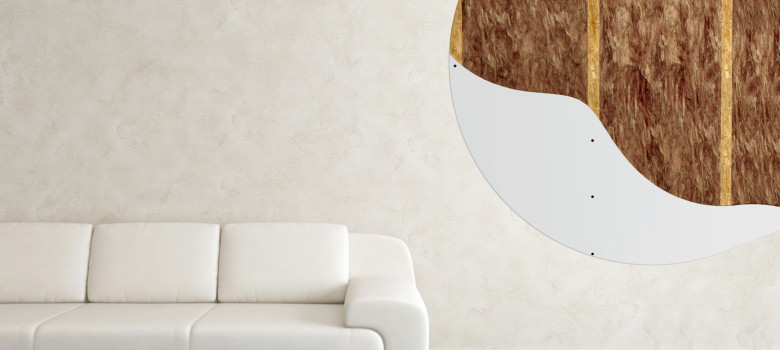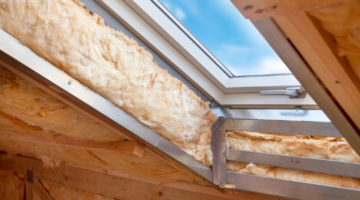
Here’s a question we get called about all the time! Should you insulate party walls or floors? Does it make a difference or are you just wasting money?
Floor and Ceiling Insulation
Let’s say for argument sake you live in a flat with another dwelling below you. Chances are that they are heating their property to a similar level (give or take a few degrees), to you. That means there is very little heat differential between you and your neighbour and adding insulation here is not going to save you any money on your bills, as it is not a heat loss surface. In fact quite a bit of heat would be transferred by convection and radiation back towards your floor from below cancelling out effects of heat losses into the floor from your flat above.
This works exactly the same way with a ceiling that has another property above, as long as the dwelling above is heated somewhat!
You may be wondering that we have missed a trick here – what about heat loss through conduction? This is where heat is transferred from the body of one object to another. Conduction is not that relevant because most ceilings will have some sort of void – this is an air gap between the floors, and luckily air is a poor conductor of heat meaning that very little heat would be lost this way.
This is why if you have a concrete floor on the ground floor you may want to insulate as heat loss through conduction may becomes quite material.
When can floor and ceiling insulation be worthwhile?
Insulation between levels in flats is often done not for its thermal insulating properties, but for its noise reduction qualities. Adding a layer of wool insulation between you and your noisy neighbour is going to act as terrific noise proofing. It is pretty hard to quantify the monetary value of peace and quiet, so I will leave it up to you as to whether it is worth insulating for noise reduction purposes.
Some older properties have airbricks between floors to help the floorboards breathe. That means cold air entering the property and bypassing your wall or loft insulation. In these cases it is really worth considering insulation, which will allow the air to circulate but prevent it from getting into the living area.
How to insulate floors between properties?
If you need to insulate between floors, you can do so in a very similar way to a ground floor. This means hanging the insulation under the floorboards or installing rigid board insulation on a concrete floor.
Insulating partition walls
This applies as much to houses as it does to flats, but the insulation will be carried out in different ways.

You can insulate this kind of party wall in one or two ways – you can fill them just like a standard cavity wall, or you can use internal insulation installed on your internal wall.
Something you need to bear in mind when insulating a party wall is the ownership of the cavity – it may belong partially or completely to your neighbour, so make sure you speak to them before you start pumping insulation into the cavity. If you are just insulating the internal walls this isn’t an issue of course.
Insulating your party wall is usually a little over the top however, as you only lose a little heat through that uninsulated cavity wall compared to exposed external walls, which are always worth insulating!












I live in Wembley Park and the flat I have lived in for the past 16 years has little or no noise insulation and as a consequence, every sound can be heard and it is driving me to absolute despair.
It seems to me that the local council has extremely low standards when it comes to social housing.
They recently issued a public statement calling that “social housing is very important to them”
I find that extremely difficult to believe because all the housing I have lived in since my childhood has been of very poor quality especially with regards to noise.
In fact, this flat I am living in was hailed as a “regeneration” by the local council.
If this is true then their definition doesn’t match mine.
It seems to me that no one from central to local government wants to deal with this issue.
How can it be that so many flats and houses throughout the country have issues with noise?
That can’t be a mere co-incidence surely?
Why can’t all homes be fitted with noise insulation as a new standard?
I recall living a 1970s tower block in the 70s and the problem caused by a lack of insulation was clear to see and yet here I am in the 21st century in a so-called “regenerated flat” and the same old problems are here.
It is obvious that this issue with no noise insulation is being ignored by central and local government across the country.
And it is unfair because I know from bitter experience that exposure to noise in poorly insulated flats can and does have a damaging effect on mental and physical health.
Anyone would be forgiven for thinking that we are still living in the 18th century.
Standards aren’t as high as they should be especially in the Borough I have lived in for the past 50 years.
I wonder whatever happened to the Labour government’s “decent homes” programme?
I am not completely convinced. In most apartment buildings here in Budapest heat rises so that higher floors are warmer than lower floors. Insulating the ceiling should make a difference. There are solid brick 19th century buildings.
I live in a purpose built block on the ground floor. The insulation is extremely poor to non existent. I would like an assessment of the what needs to be done to insulate properly.
Hi,
Before doing this – have you checked with the council that insulation works can be completed? Typically on flats, it is an all or nothing approach (i.e. all the flats need to be insulated), so worth checking that first before considering next steps.
Your newsletter tab is blocking the send button. On the mobile version of your page
Every home I’ve lived in for the past 52 years, has clearly lacked adequate insulation.
As a consequence, I have suffered terribly because of the noise from my neighbors that invades my space day and night.
I don’t know why successive so-called governments haven’t addressed this long-standing issue?
The most logical reason seems to be money, i.e. if they do it for one flat, they have to do it for all and so they simply overlook it and leave people to suffer.
It’s so cruel and makes it hard for me to trust them.